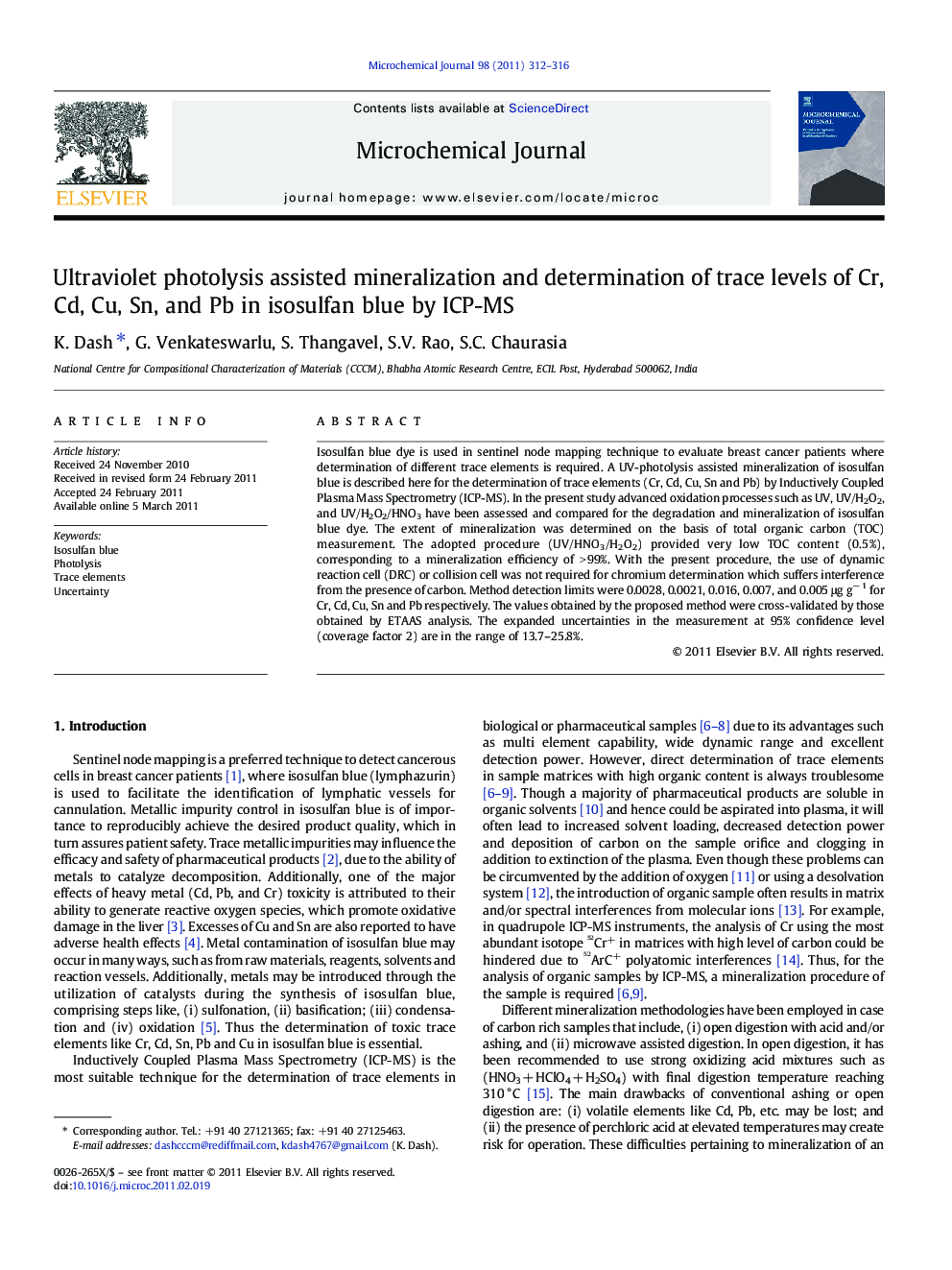| Article ID | Journal | Published Year | Pages | File Type |
|---|---|---|---|---|
| 1228043 | Microchemical Journal | 2011 | 5 Pages |
Isosulfan blue dye is used in sentinel node mapping technique to evaluate breast cancer patients where determination of different trace elements is required. A UV-photolysis assisted mineralization of isosulfan blue is described here for the determination of trace elements (Cr, Cd, Cu, Sn and Pb) by Inductively Coupled Plasma Mass Spectrometry (ICP-MS). In the present study advanced oxidation processes such as UV, UV/H2O2, and UV/H2O2/HNO3 have been assessed and compared for the degradation and mineralization of isosulfan blue dye. The extent of mineralization was determined on the basis of total organic carbon (TOC) measurement. The adopted procedure (UV/HNO3/H2O2) provided very low TOC content (0.5%), corresponding to a mineralization efficiency of > 99%. With the present procedure, the use of dynamic reaction cell (DRC) or collision cell was not required for chromium determination which suffers interference from the presence of carbon. Method detection limits were 0.0028, 0.0021, 0.016, 0.007, and 0.005 μg g− 1 for Cr, Cd, Cu, Sn and Pb respectively. The values obtained by the proposed method were cross-validated by those obtained by ETAAS analysis. The expanded uncertainties in the measurement at 95% confidence level (coverage factor 2) are in the range of 13.7–25.8%.
